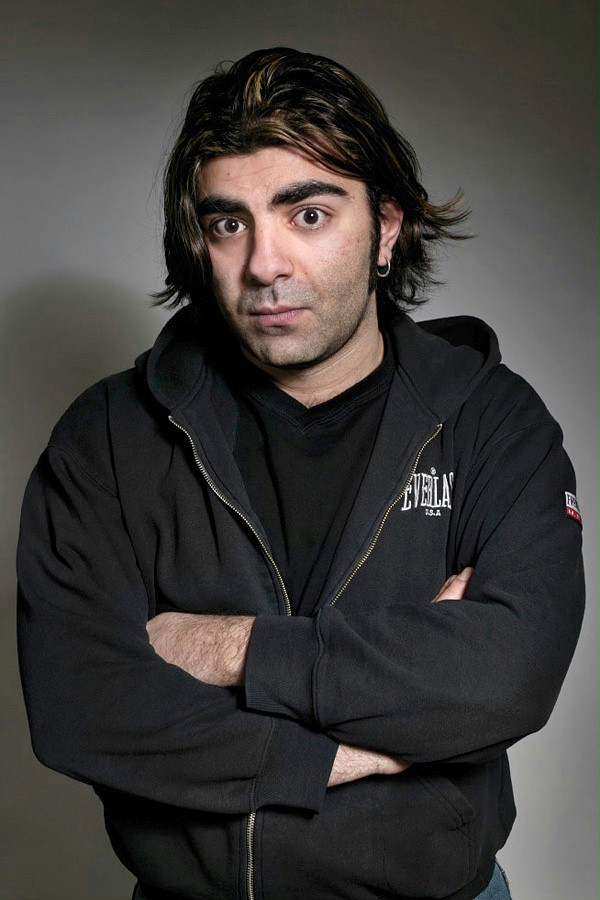
Over the past 10 years, the Turkish German filmmaker has worked on his trilogy focusing on Love, Death and the Devil. This trilogy finds its conclusion with “The Cut,” which is slated for a 3 p.m. screening on Nov. 14 as part of the 2015 Fresno Film Festival. Following the program, Oscar-winning screenwriter Mardik Martin, an Armenian American and Hollywood veteran who co-wrote the film with Akin, will discuss the film in a Q&A.
To fully understand “The Cut” and its filmmaking lineage, let’s take a look back at the 41-year-old director’s previous first two trilogy installments.
The first, “Head-On,” won the Berlin Film Festival’s Golden Bear award back in 2004 and garnered attention for its immersive love story of two Turkish immigrants in Hamburg. Filmworks screened it in April 2005.
The unlikely “Love” chapter starts with 40-something Cahit, a drunken, aging punk rocker living a miserable existence following his beloved wife’s death. One night, Cahit gives up on his bleak life and intentionally crashes his car into a wall head on (a lá the film’s namesake).
At the hospital, he meets Sibel, a young woman feeling the weight of her traditional Turkish parents’ oppression, so much so, that she too is suicidal. Sibel then makes Cahit an improbable proposition: marriage. She sees the marriage as a way out of her parent’s tyranny and he, a pseudo roommate. The two soon fall for one another — until a tragic situation rips them apart.
Akin’s take on the Turkish immigrant experience in Germany is a critical drama, but it also has plenty of dark humor in it — something of which Akin said a drama should have.
“Germans try to categorize films: in a comedy, you just laugh and in a drama, you’re not allowed to laugh. I don’t believe in that, sometimes we laugh and cry in the same hour. It’s dangerous when you have a drama and you put humor in it,” Akin says in an interview with IndieWire. “I think it’s the opposite, the funnier it is in the beginning of such a story, the more dramatic it can become.”
With “Head-On,” it was the first glance into Akin’s unwavering commitment toward not tying up any religious, cultural and sexual differences of the modern Turkish experience into a neat package for all to digest.
In 2009, Akin returned with another critical darling, “The Edge of Heaven,” which took home best screenplay at Cannes. Filmworks screened it in September 2008.
If you’re in dire need of the storyline, let me lay it out for you in the simplest terms I can manage: A Turkish German professor goes to great lengths to pay for his father’s sins. He attempts to find the daughter of his father’s dead girlfriend in Istanbul and make reparations.
This hyper-linked narrative piece again goes against the grain of storytelling, as the film is more about its characters than the actual plot itself. It may frustrate those who watch it the first time, to learn that although parallel plot strands run throughout, the stories never converge at the end. Simply, Akin’s characters are deeply related in theme, but not in plot.
Although Akin ties the Turkish German cultural conflicts in “Head-On,” the difference here is a more in-depth examination between parents and children marked by sudden, unexpected deaths. Although a seemingly complex yarn, you don’t have to be a Turkish minority in Germany to grasp its meaning.
As “The New Yorker” put it best: “ ‘The Edge of Heaven’ is, in the best sense, mainstream cinema. It dives into the current that sweeps all of us along: fathers and sons, mothers and daughters, anyone leaving home and aching to return. The story, though intricate, is never obscure, and it could be set anywhere.”
And finally, we come to “The Cut,” which is about the devil inherent in man, and concludes Akin’s trilogy on love (“Head-On”), death (“The Edge of Heaven”), and the devil. (Filmworks also screened Akin’s family comedy “Soul Kitchen” in September 2010, but that film was not part of his trilogy.)
“The Cut” dives into a usually untouched historical narrative: the Armenian Genocide. It tells the story of one survivor, Nazaret Manoogian, a blacksmith and loving father who is struck mute by the Turks after narrowly escaping death as an enslaved worker. After learning his twin daughters may still be alive, he embarks on a dangerous journey across the world in a desperate search to reunite with his family.
Although it is being added to a relatively small list of films detailing the 1915 genocide, Akin has been quick to point out this chapter is yet another exploration of the human psyche within supposed cultural boundaries.
“ ‘Love,’ ‘Death’ and ‘Devil’ are three films that are my personal laboratory to understand the human being,” Akin told The Hollywood Reporter. “But I’m afraid three films are not enough to understand the human factor.”
Don’t worry: You don’t have to watch the previous two installments to understand the heart-wrenching enormity and importance of “The Cut,” but it will help you recognize this trailblazing German director’s deep mark as a filmmaker.
Yvette Mancilla studies multimedia journalism at Fresno State. She currently serves as the Filmworks marketing intern.
